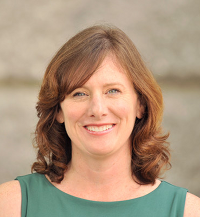Tucker Comments on Victorian Pseudoscience, Romance

The pseudoscientific myths about love and sexuality that abounded in the Victorian era, many of which seem “cruel and oppressive” by today’s standards, could also offer women relief from the era’s “rigid gender politics,” according to Associate Professor of History Jennifer Tucker, who comments on the topic for a Broadly article.
For much of the 19th century, the Western world was fascinated with a variety of pseudosciences, or theories that lack a basis in the scientific method.
“Definitions of science were malleable and hotly contested in the 19th century,” said Tucker, who is also associate professor of science in society, associate professor of feminist, gender and sexuality studies, and associate professor of environmental studies. “Far from being on the sidelines of intellectual life, spiritualism and other unconventional forms of knowledge often provided a means for Victorians from a variety of different social backgrounds to question scientific authority and to ask what counted as a proper science, or as a ‘scientific practice.'”
“One of the great myths about the Victorian age [was] that it was sexually repressive; on the contrary, Victorian society was obsessed with sexual reform, heterosexual and homosexual love, lust, and sex (as well as of the policing of sexual desires),” added Tucker. “Love and sex were both controversial and politicized.”
Pseudoscientific theories included phrenology (which was used to explain the different propensities of men and women toward love and sexual desire); the use of love potions made of dangerous ingredients such as arsenic and belladonna; beauty face masks made of raw beef; cures for low libido such as bull testicles; and vibrators used to treat “hysteria” in sexually frustrated women.
According to the story, “Victorians were also surprisingly progressive on what would eventually evolve into more enlightened views on gender.”
“Theosophists [occult philosophers] believed that life in male and female bodies taught different lessons; for some, this meant that it was necessary for the Ego to incarnate many times as both female and male,” Tucker explains. “Many theosophists believed, for example, that in their evolutionary progress men reincarnated as women, and women as men. Therefore at any given time, as one believer in this theory said in 1892: ‘We have… men in women’s bodies, and women in men’s bodies.'”

